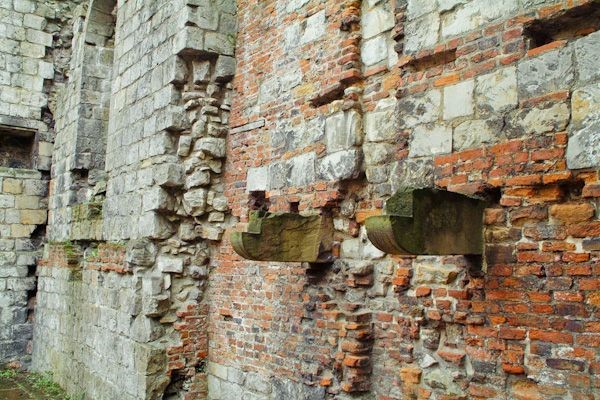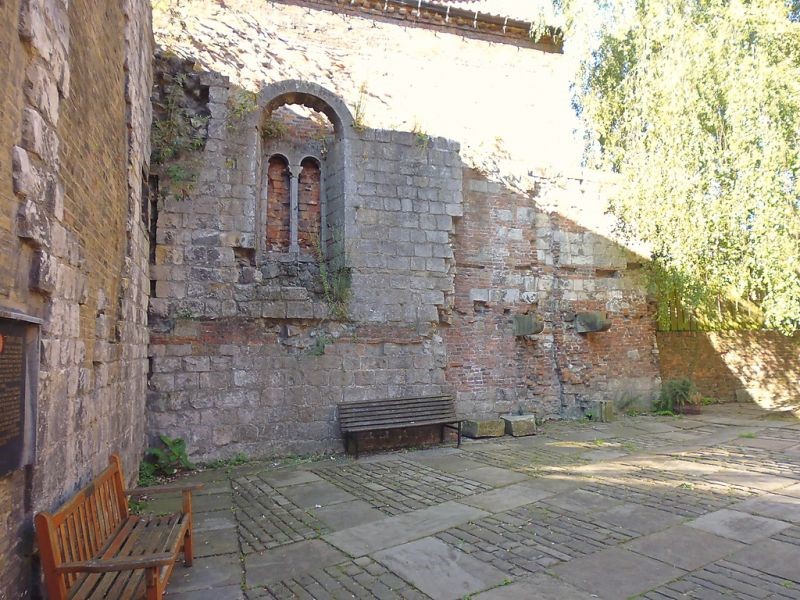Join us as we journey back in time. No pushing.
Written by Howard Mosley
In a city as ancient as York, claiming to be the oldest anything is a pretty significant boast. When saying something like that, you’d better be ready to step up and drop some truth bombs to confirm your claims. So, when a building proudly declares to be the oldest house in York, you’re probably not expecting to be able to walk inside, for free, right? Well you can. Kinda.
What is referred to as The Norman House are the remains of a private dwelling that exist, in situ, down an alley off Stonegate. Seriously, go and have a gander today. Walk along the alley by 48/50 Stonegate and you’ll arrive in an open courtyard, lined on two sides by very old looking stones. The two walls of the house were rediscovered in 1939 and restored in 1969 by the York Civic Trust. It’s just there, for anyone to see.
Well old
And how old is the oldest house in York? Well, The Norman House was built between 1160-80 in the very swanky Norman style of stone. You see, in the 12th century most buildings that weren’t churches, castles or cathedrals were mostly made from timber. The fact that the first occupant of this particular residence on Stonegate could afford an entire house made from stone was a sign that he or she was clearly loaded.
But how do we know that it wasn’t a church? Certainly, if you take a stroll to check out the house’s remains, the most striking feature is the original window, which looks pretty church-like. However, archaeologists surmised that the building must have been a private house because of it – the window wasn’t made to accommodate glass. A church’s window would have been made to fit stained glass, but this window featured only a closing shutter and security bar.

Troubles
Unfortunately, there might have been a very serious reason for that security bar. Although the records stating who built and occupied the house first have been lost, it is possible that the owner was Jewish. A very similar house still exists today in Lincoln, known as The Jew’s House. Jewish financiers were some of the richest people in England at this time, and enjoyed Royal protection thanks to their importance to the economy.
William of Newburgh, a canon of the priory in Bridlington, said of Jewish financiers in York, “with profuse expense they had built houses of the largest extent in the midst of the city, which might be compared to royal palaces and there they lived in abundance and luxury almost regal.”
However, antisemitic sentiment was rife, culminating in York with a riot in 1190 that led to the Jewish population of the city seeking shelter in the castle and then, tragically, committing mass suicide. There would have been a great need for security, both for the people within the house and the treasures and money potentially kept there.
The house was built in a way that suggested wealth, and not just because of the stone. The upper floor, marked by a line of red bricks still visible now, would have acted like a great hall and living space, while below that existed the crypt – perfect for stashing gold. Uniquely a toilet was discovered in the remains – a garderobe – something no ordinary citizen would have had.

Minster life
Although the house was built as a non-religious building, by 1376 it was owned by the clergy of York Minster. The building became the York residence of the Prebend of Ampleforth, one of the canons of the Minster who required a property close to the cathedral. From then on, The Norman House was very much The Minster’s House, as canon after canon called it their city dwelling
The house would have originally enjoyed a clear view of Stonegate, with a long drive or path leading up to it, until centuries of development hid it from view. It is believed that most of the house was demolished in the 18th century, with two of the original walls being incorporated into surrounding structures. When these buildings were removed in 1939 the intricate stonework and window tracery were rediscovered.
The truly great thing about the remains are that they are still sitting there, where they were constructed 850 years ago, for all to see. The next time you’re wandering along Stonegate, pop by and take a look.











Add a comment